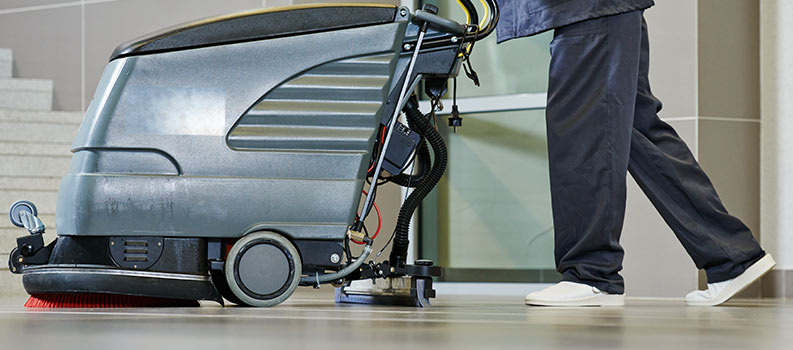Air travel is definitely pioneering the way the whole world travels and transports, most of the airports are definitely in a serious need of improvement. Even these airports looking like straight out of a Hollywood movie with their modern designs and a bunch of advanced entertainments and comforts, they also hide their secrets. In fact, it appears that, due to the major traffic of people, airports can become significant hubs for diseases and viral infections. This is one aspect of travelling with an aircraft that usually no one thinks about, however, it remains a pretty important thing to consider and take adequate precautions when visiting an airport. Hygiene management and regular cleaning could be a major challenge for most of the airports around the world, even for the most expensive and advanced ones. Cross-contamination between so many passengers can allow bacteria to travel across the globe and spread with the speed of light. It is the opinion of Dr Colm Moore, area technical manager for Initial Washroom Hygiene.
The number of passengers visiting and going through airports on an annual basis worldwide is pretty much staggering, to say the least. As an example, 2017 is the busiest year for Heathrow airport in London with an average daily footfall of 213,668 people! Just imagine how many people these are and each one of them could be a potential carrier of communicable, infectious, and contagious disease. Unfortunately, the ease of air travel, its availability pretty much everywhere, and the impressive number of people using this sort of transportation pretty much means that airports usually turn into a hot spot for a number of different infections that become viral.
So next time you are rushing to board the plane or you are waiting at the airport in transit for your next flight, you can pretty much unknowingly pick up or even pass bacteria, microbes, and what not from your hands, your luggage, your clothes, somewhere you sit for a while. Since hygiene management often cannot stand the test of high standards at most of the airports, you can become a recipient of a number of diseases and infections in a matter of hours.
Of course, one of the priorities of airport management should be ensuring exceptional levels of hygiene and cleanliness, which is not just necessary for the good image of the airport and part of great customer service, but also a step forward in guaranteeing customers’ wellbeing.
Dissemination of disease
One of the main concerns of the World Health Organisation since 1951 is health, hygiene, and sanitation aspects of air transport. It is since the Fourth World Health Assembly recommended to all governments that they should “improve sanitary and environmental conditions, especially in and around ports and airports”. Since the growing popularity of air transport, the concern of spreading diseases in bacteria internationally in a matter of hours have grown respectively. Currently, the annual air passenger traffic is more than double compared to just 15 years ago and the same concerns are now higher than ever. Recent studies show that the most important aspects of air travel customer service for passengers is fast and frictionless service and journey, which means that hygiene and health are definitely not of the priority list and this faces airport management with some serious difficulties of matching these expectations while still managing to maintain a high level of cleanliness.
Sick and Healthy Cross Paths
With such impressive passenger traffic at airports, you never know who is meeting and who you are crossing paths with, which means you are not expecting or thinking of how many sick people you are going to meet. Some areas of most airports make it hard to avoid large spaces shared by a great volume of passengers, which significantly increases the risk of spreading bacteria and diseases. Security and passports control is considered to be the most high-risk zones at the airport when it comes to person-to-person transmission. Just imagine the long queues of passengers! The results from a recent study revealed that the desire to minimise closures and disruption contributed to poorer levels of hygiene in airport areas with high traffic.
Bacteria and Microbes Hotspots
A recent study by the University of Nottingham and The Finnish National Institute for Health and Welfare offer a more in-depth look at the hotspots that hide serious hygiene risks airports. According to the results revealed by the study, the most notable item at airport security from a hygiene perspective is the plastic trays used for carry-on luggage at X-ray machines. As the researches explain, “these boxes typically cycle with high frequency to subsequent passengers and are typically seized with a wide palm surface area and strong grip, enabling microbes to easily transfer from passenger to passenger.”
In Conclusion
Hand disinfectants appear to be one of the best recommendations of precautions you can benefit from when at the airport, as they create a lasting barrier against microbes and can fight germs. So make sure to bring one with you every time, as providing passengers with hand hygiene stations in areas with high traffic is still a project commented by many airport managements. Furthermore, it may sound obvious but is something we often miss when in a rush or tired at the airport – effective hand wash is the key to a lasting barrier to microbes, germs, and bacteria too. Frequent and effective washing of the hands decreases the presence of bacteria on hands by up to 80% and reduce the risk of illness by 50%.

